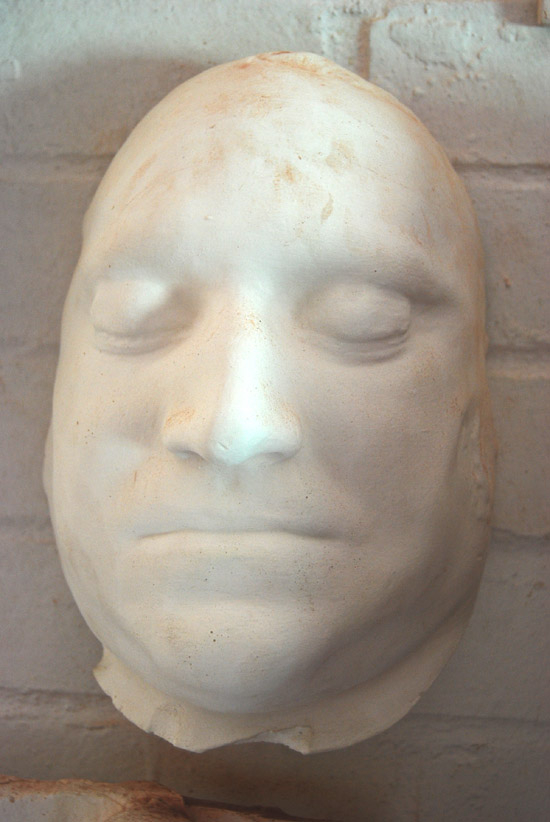An English cast plaster death-mask of the hanged mutineer Richard Parker
Cast at LASSCO Three Pigeons by Peter Hone
£100
The mutiny at Spithead (an anchorage near Portsmouth) lasted from 16 April – 15 May 1797. Sailors on 16 ships in the Channel Fleet, commanded by Admiral Lord Bridport, protested against the living conditions aboard Royal Navy vessels and demanded a pay rise. It was a serious and protracted stand-off due to what had been a continual decline in the worth of sailors’ pay for decades and a whole host of grievances. it was eventually settled by the Admiralty.
Inspired by the example of their comrades at Spithead, the sailors at the Nore (an anchorage in the Thames Estuary) also mutinied, beginning on 12 May, when the crew of Sandwich seized control of the ship. Several other ships in the same location followed this example, though others slipped away and continued to slip away during the mutiny, despite gunfire from the ships that remained (who attempted to use force to hold the mutiny together). The mutineers had been unable to organise easily because the ships were scattered along the Nore (and were not all part of a unified fleet, as at Spithead), but they quickly elected delegates for each ship. Richard Parker was elected “President of the Delegates of the Fleet” due to his obvious intelligence, education and empathy with the suffering of the sailors. Parker was a former master’s mate who was disrated and court-martialed in December 1793, and reenlisted in the Navy as a seaman in early 1797.
Demands were formulated and on 20 May, a list of eight demands was presented to Admiral Buckner, which mainly involved pardons, increased pay and modification of the Articles of War, eventually expanding to a demand that the King dissolve Parliament and make immediate peace with France. These demands infuriated the Admiralty, which offered nothing except a pardon (and the concessions already made at Spithead) in return for an immediate return to duty.
The mutineers expanded their initial grievances into the beginnings of a social revolution and blockaded London, preventing merchant vessels from entering the port, and the principals made plans to sail their ships to France, alienating the regular English sailors and losing more and more ships as the mutiny progressed. On 5 June Parker issued an order that merchant ships be allowed to pass the blockade, and only Royal Navy victualling (i.e., supply) ships be detained; the ostensible reason provided in the order was that “…the release of the merchant vessels would create a favourable impression on shore.”, although this decision may actually have been perhaps more due to the complexities involved in such a wide undertaking as interdicting all the merchant traffic on the busy Thames.
After the successful resolution of the Spithead mutiny, the government and the Admiralty were not minded to make further concessions, particularly as they felt some leaders of the Nore mutiny had political aims beyond improving pay and living conditions.
The mutineers were denied food, and when Parker hoisted the signal for the ships to sail to France, all of the remaining ships refused to follow; eventually, most ships slipped their anchors and deserted (some under fire from the mutineers), and the mutiny failed. Parker was quickly convicted of treason and piracy and hanged from the yardarm of Sandwich, the vessel where the mutiny had started. In the reprisals which followed, a total of 29 leaders were hanged, while others were sentenced to flogging, imprisonment or transportation to Australia. The vast majority of men involved in the mutiny, however, were not punished at all.
After the Nore mutiny, Royal Navy vessels no longer rang five bells on the last dog watch, as that had been the signal to begin the mutiny.

